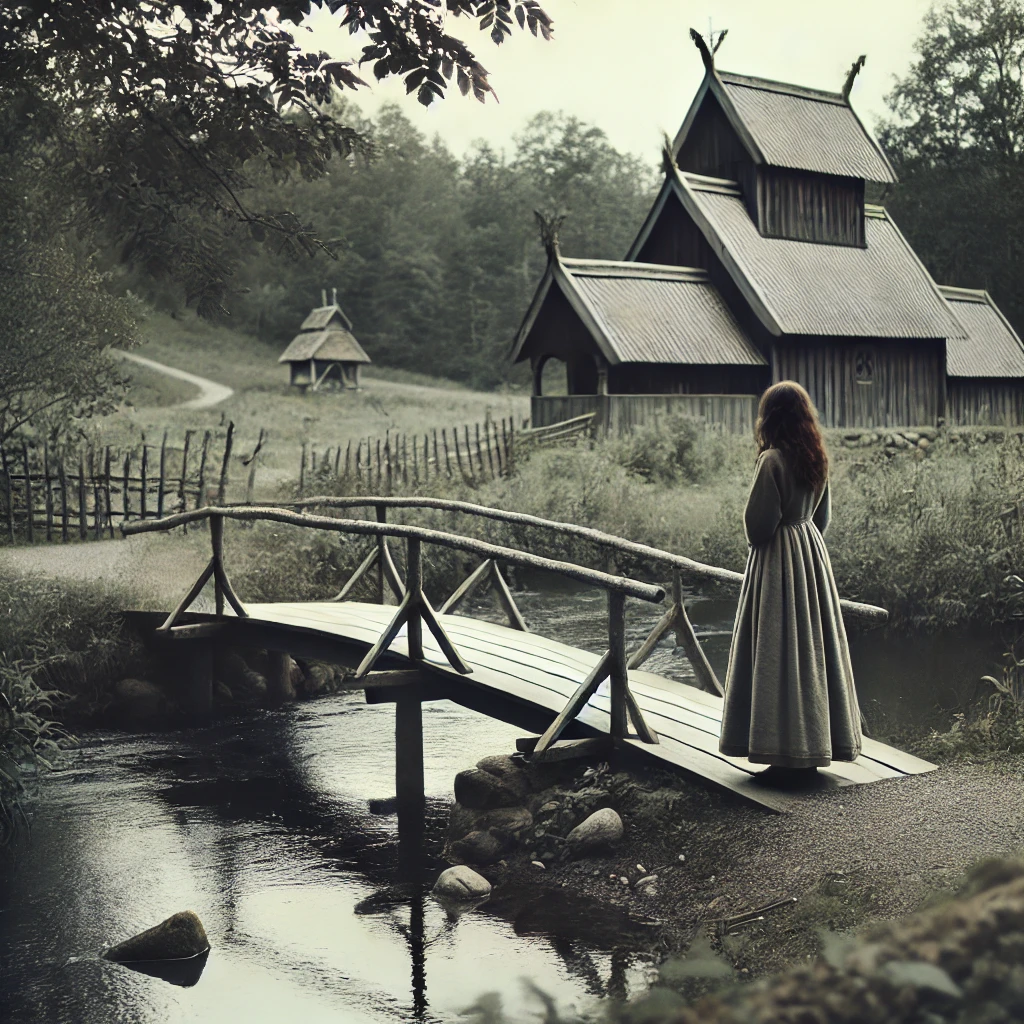From Kata in Varnhem, we’ll take a look at other early Christian women who, quite literally engraved their religious beliefs in stone – on runestones and rock carvings.
Ingerun placed her hand against the rock face. Upon it, the image of two serpents were engraved, intertwined at their necks and at the base of their tails. Inside their bodies, her message was carved:
“Ingerun, daughter of Hård, had the runes carved after herself. She wished to travel east and out to Jerusalem.”
Here it would stand, by the road on the peninsula, for eternity, telling all who passed that she, Ingerun, had found the true path in God and His mother, and that to honor them, she desired to travel to Jerusalem.
Her fingers traced the serpents’ winding bodies, painted red, and she promised herself that one day she WOULD go. When the children were grown, when her daughters were married, and her son had taken over the farm.
Then she would have the ship built that would take her across the sea that lay glittering before her, and sail east, all the way to the Holy Land.
And if God’s mother held her protective hand over her, she would one day return here, to Stäksön, and raise a great stone. In honor of God and His mother, Mary.

The rock face that once bore the inscription is long since gone. It was located at Stäksön in Stockholm County, and although it was destroyed when a road was built there in the 1600s, we know of it thanks to the drawing above.
Such rock carvings and runestones bear evidence of the transition to the new religion—Ingerun was far from alone in proclaiming her faith in this way. The vast majority of runestones carry a Christian message, either through Christian symbolism, such as crosses, or Christian prayers, the most common being, “May God and God’s mother help his/her soul.” Women are highly present in these inscriptions, especially in those invoking God’s mother.

On runestones that mention bridge-building, a full 55 percent refer to women—either that it was women who commissioned the bridge, or that it was erected in their memory. Bridge-building during the time of the transition to Christianity was closely tied to the Church—a way to help people reach the new Christian places of worship.
Runestones were primarily raised in Denmark and Sweden, between the 10th and 12th centuries, during the period when Christianity was gradually gaining more influence in the North. The Christian messages on the stones suggest that they may have been a way for people to express their conversion to the new faith, and women appear to have been significantly involved, even driving, this change.
In the next post, we’ll explore why women were more drawn to Christianity than men.
Sources:
Gräslund, Anne-Sofie. (1996). Arkeologin och kristnandet. I Bertil Nilsson (Red.) Kristnandet i Sverige – gamla källor och nya perspektiv. Uppsala: Lunne Böcker.
Gräslund, Anne-Sofie. (1996). Kristnandet ur ett kvinnoperspektiv. I Bertil Nilsson (Red.) Kristnandet i Sverige – gamla källor och nya perspektiv. Uppsala: Lunne Böcker.
Ohlander, Ann-Sofie & Strömberg, Ulla-Britt. (2018). Tusen svenska kvinnoår. Lund: Studentlitteratur.

